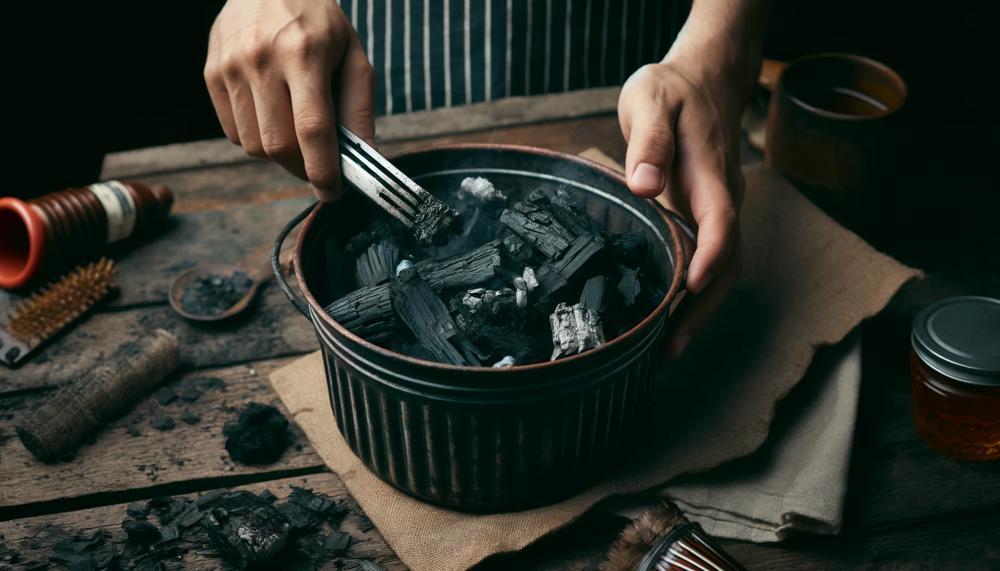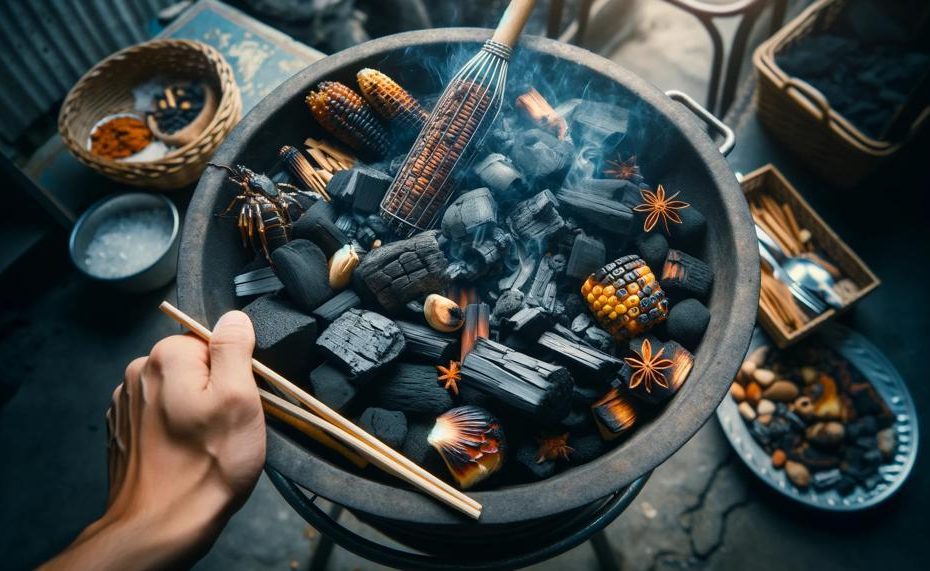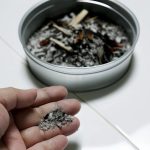Did you know that Americans light up their grills over 60 million times each year, releasing not just the mouth-watering aroma of barbecue but also tons of charcoal ash? While the tantalizing scent of grilled food is a summer staple, what happens after the last burger is flipped? The proper disposal of charcoal is crucial for both safety and the environment, yet it’s often overlooked in the flurry of outdoor feasting.
In this guide, we’ll uncover the best practices for disposing of charcoal and ash after grilling. It’s not just about scraping out your grill and tossing the remnants into the trash. Instead, you need to consider factors like cooling times, disposal methods, and environmental impact.
So, how do you properly dispose of charcoal after grilling?
Here are the steps to properly dispose of charcoal after grilling:
- Extinguish the Charcoal: Close the lid and vents on your grill and wait at least 48 hours until the charcoal and ash have completely cooled.
- Separate Ash from Unused Charcoal: If there are still some unburned pieces of charcoal mixed with your ash, you can reuse them. Separate the charcoal from the ash using a kick ash basket or some other means of separation.
- Reuse Unburned Charcoal: You can use any half-burned pieces of charcoal on your next grilling session. Simply set aside the chunks of charcoal, or put them back in your grill for later use.
- Dispose of the Ashes: Once the ashes have thoroughly cooled, scoop them into used aluminum foil and wrap them up. You can then dispose of the aluminum foil in your garbage bin. Make sure you wait at least 48 hours after you grill before doing this.
Remember, the disposal method may depend on the type of charcoal you’re using. There are two different types: charcoal briquettes and lump charcoal.
Lump charcoal is all-natural, made from burning wood in the absence of oxygen, and can be disposed of in various ways, including composting or adding directly to your garden soil.
However, briquettes are made with additives that help them burn consistently and hold them together, limiting disposal options.
Always check your charcoal bag to see if the kind you use is additive-free or not.
With these points in mind, let’s dive into the details of how to keep your grilling experience not only delicious but also responsible, ensuring a safer and more eco-friendly approach to charcoal disposal.
Contents
What You’ll Need
Proper disposal of charcoal after grilling requires specific materials and equipment to ensure safety and efficiency. Below, I’ve detailed what you’ll need, along with their purposes:
| Item | Description | Use |
| Metal Tongs or Shovel | Sturdy metal tools resistant to heat. | To safely separate unburned charcoal from ashes, ensuring no embers are left behind. |
| Metal Container with Lid | A durable container, preferably made of metal, with a secure lid. | To store and isolate cooled ashes and unburned charcoal until disposal, preventing any risk of reignition. |
| Labels for Containers | Heat-resistant labels. | To mark containers specifically used for charcoal disposal, aiding in safe storage and identification. |
| Fresh Charcoal | New charcoal briquettes or lumps. | For mixing with saved, unburned charcoal for future grilling sessions, ensuring effective and sustainable usage. |
| Kick Ash Basket (optional) | A basket designed to separate ash from usable charcoal. | To simplify the cleaning process and salvage reusable charcoal, enhancing the grill’s efficiency and cleanliness. |
| Aluminum Foil | Common kitchen aluminum foil. | To wrap and contain cooled ashes before disposal in the trash, ensuring safety and cleanliness. |
Note: Always make sure that the charcoal is completely cooled before handling it, which might require up to 48 hours after the grilling session has ended. This precaution helps prevent accidental fires or burns.
For environmentally friendly options, consider reusing unburned charcoal and disposing of natural, additive-free charcoal by adding it to compost or using it in the garden. These methods not only recycle materials but also contribute positively to your garden’s health, acting as a moisture regulator or odor reducer.
How to Cool Your Coals
Cooling charcoal post-grilling is crucial to ensure safety and prevent unwanted fires. Here’s how to manage this process effectively:
| Method | Procedure | Precautions |
| Rearrange Coals | Spread evenly across grill | Avoid direct contact; use grill tools |
| Adjust Airflow | Close lid and vents | Check for complete extinguishment |
| Water Mist | Light spray over coals | Keep distance to avoid steam |
| Inspection Period | Wait 48 hours | Check coals are cool before disposal |
| Safe Disposal | Wrap in aluminium foil | Use non-combustible bin |
How to Cool Your Coals
After a delightful grilling session, ensuring your charcoal cools down safely and effectively is essential. Here’s a step-by-step guide to manage your hot coals:
- Extinguishing Coals
- Spray Water: Gently spritz water over the spread-out coals using a spray bottle. This helps lower the temperature without causing excessive ash from steam.
- Adjust Vents: Half-close the air vents to limit oxygen, aiding in the extinguishing process.
- Handling and Storage
- Cover with Foil: Once extinguished, cover the coals with aluminum foil. This traps the heat and snuffs out any remaining embers.
- Wait and Check: Allow the coals to sit covered for at least 48 hours, ensuring they are completely cool to the touch.
- Disposal of Ash
- Safe Removal: Use a metal scoop to collect the ash into a piece of aluminum foil.
- Secure Storage: Store the wrapped ash in a metal ashcan until ready to dispose of in the trash.
- Reuse of Charcoal
- Save Usable Coals: Half-burnt charcoal can be kept for your next grilling adventure. Store in a dry place after confirming they are cold.
Safety Tips
- Always wear protective gloves when handling hot coals or ash.
- Never dispose of hot ash directly into a trash bin as it poses a fire hazard.
How to Dispose of Used Charcoal and Ash
Disposing of used charcoal and ash responsibly is vital for both environmental and safety reasons. Here’s a clear and structured approach to ensure you handle this task appropriately:
- Ensuring Complete Extinguishing
- Before any disposal, make sure the charcoal and ash are completely cooled. This can take up to 48 hours. Close the grill’s lid and vents to cut off the oxygen supply, helping to extinguish the coals safely.
- Reuse of Charcoal
- Not all used charcoal needs immediate disposal. Half-burned charcoal can be effectively reused for subsequent grilling. This reduces waste and is cost-efficient. Store the reusable charcoal in a dry place.
- Recycling Charcoal Ash
-
Charcoal ash, particularly from natural, additive-free charcoal, can be recycled in various ways:
- As a garden amendment: It can add mineral-rich elements to compost.
- For pest control: Sprinkling ash in garden beds can deter slugs and snails.
- Safe Disposal in Trash
- If recycling isn’t an option, ensure the ash is cool, then place it in a metal container. Once completely cooled, wrap it in aluminium foil and dispose of it in your trash can.
- Special Considerations for Ash
- Never dispose of hot ash in a garbage bin as it poses a fire risk. Use an ash can for temporary storage until you’re sure the ash has fully cooled off.
How to Dispose of Used Charcoal and Ash

To ensure safe and environmentally responsible disposal of used charcoal and ash after grilling, adhere to the following practices:
Extinguishing Charcoal:
- Cooling: Allow the charcoal and ash to cool completely for up to 48 hours before handling.
- Smothering: If immediate disposal is needed, extinguish the charcoal by closing the grill’s lid and vents, cutting off oxygen supply.
Handling and Storage:
- Transfer: Use a metal scoop to transfer cooled ash into a non-combustible container, such as an ashcan or metal bin, lined with aluminum foil.
- Temporary Storage: If not disposing of immediately, store the container in a safe, dry place away from any flammable materials.
- Garden: Mix ash with soil to deter pests and enhance nutrient content.
- Compost: Sprinkle a small amount of ash to balance the pH of your compost heap.
- Pond Care: Use ash sparingly to control algae growth in ponds.
- Chemical Awareness: Avoid using ash from charcoal treated with lighter fluid or other chemicals in gardens or composts.
- Flammability: Never dispose of hot ash in trash bins or compost heaps to prevent fires.
Disposal Methods:
| Type of Charcoal | Disposal Method | Environmentally Friendly Uses |
| Natural Lump Charcoal | Scatter in garden or add to compost | Reduces moisture and odour, beneficial for soil enrichment |
| Charcoal Briquettes (used) | Dispose in trash bin | None, as briquettes may contain additives |
| Half-burnt Charcoal | Reuse in next grilling session | Conserves resources and reduces waste |
Creative Uses:
Safety Precautions:
How to Reuse Partially Burned Coals
Here’s how you can efficiently reuse partially burned coals from your previous grilling session, ensuring a sustainable and cost-effective approach to grilling:
Sorting Your Coals
Before reusing your coals, it’s crucial to separate fully burned ash from partially burned coals.
Use a “kick ash basket” to sift and save the usable coals, discarding the ash safely into a metal container until cool enough for disposal.
Storing Partially Burned Coals
Store your salvaged coals in a dry, covered container to prevent them from absorbing moisture from the environment, which can affect their reusability.
Ensure the container is non-flammable and placed away from any combustible materials.
Preparing for Reuse
When you’re ready to grill again, start by placing the partially burned coals on the grill. Add new coals around them to ensure an even heat distribution once ignited.
This method utilizes the old coals as a base, aiding in faster heating and reducing the amount of new charcoal needed.
Lighting the Coals
Ignite the coals using a natural fire starter or a chimney starter, avoiding lighter fluids to prevent any unwanted chemical tastes in your food.
Allow sufficient time for all coals to reach an optimum temperature before you begin grilling.
Safety and Maintenance
Always ensure that coals are completely extinguished after each grilling session by closing the grill lid and vents, waiting 48 hours before handling ashes.
This prevents any accidents and prepares the grill for easier cleaning and maintenance.
How to Reuse Partially Burned Coals
Reusing partially burned coals can be a savvy way to maximize your resources and reduce waste. Follow these detailed steps to ensure you do it safely and effectively:
| Step 1: Extinguish the Coals | After grilling, close the grill lid and vents to cut off the oxygen supply. This step helps in extinguishing the coals safely. |
| Step 2: Cool the Coals | Allow the coals to cool completely for at least 48 hours. Ensure they are cold to the touch before proceeding to the next step. |
| Step 3: Separate Coals from Ash | Use a kick ash basket or similar tool to sift through the coals. This separates usable coals from the ash, making reuse more effective. |
| Step 4: Store the Coals | Store the sifted coals in a dry place within your grill for later use. Ensure they are completely dry and free of any ash residue. |
| Step 5: Reuse the Coals | For your next grilling session, add the saved coals on top of a new batch. This will help them ignite faster and maintain a steady temperature. |
Conclusion
In the spirit of sustainability and safety, the art of disposing of used charcoal and ash post-grilling should be approached with care and awareness.
First, ensure your coals have completely cooled—this might take up to 48 hours. A closed grill lid and restricted airflow will smother the coals gently, preventing any risk of reignition.
For those environmentally inclined, repurpose your partially used charcoal; it’s not just thrifty but reduces waste. Natural, additive-free charcoal ash can enrich your garden soil or balance your compost’s pH.
Wrap fully cooled ash in aluminum foil, a simple yet effective barrier that prevents any mess or accidental fires when disposed of in a non-combustible bin. This method encapsulates the essence of responsibility—turning the remnants of your barbecue into a resource rather than a risk.
Embrace these practices to ensure each barbecue not only tantalizes the taste buds but also respects our environment.





